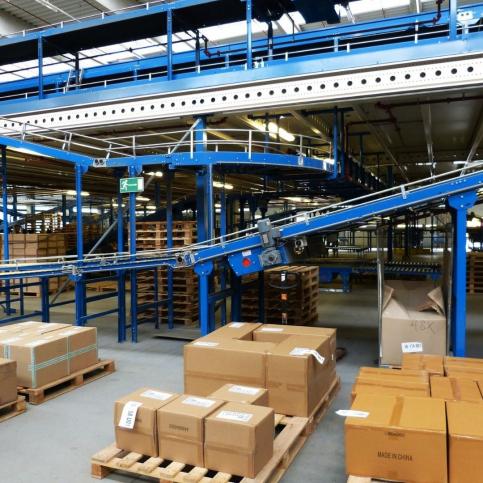When it comes to efficient material handling, incline conveyors are often considered optimal, making them an integral part of many facilities. This category of conveyors can be further subclassified as incline and steep incline conveyors, as both are proficient at transporting unit loads on an inclined plane. However, there are several factors to consider when designing an inclined belt conveyor. These will be discussed below in detail.
Design factors to consider for an incline conveyor
Spatial Constraints
The first criteria one should consider is spatial constraints if any. Depending on angle and functionality, traditional incline conveyors might require a lot of space and conveyor length to attain the ideal angle where goods can be transported without slippage. Thus, it’s prudent to carefully consider the available surface area within a facility before progressing further.
Angle of Transportation
The next step is to figure out the angle of incline for the belt conveyor. Most inclined conveyors can effectively operate only up to a certain angle, which in general, is a maximum of 25 to 30 degrees, beyond which the probability of slippage increases exponentially. Furthermore, the angle of incline will also determine the capacity of the power feeder, which is required to avoid any hang-ups as the load changes planes.
Product Dimensions
The most fundamental factor of all, before designing an inclined conveyor system, it's paramount to consider the dimensions of the product being transported such as its length and height. Apart from the dimensions, the weight of the load and its center of gravity should also be calculated, as they are also important factors in determining whether the load is susceptible to toppling or rolling.
Type of Belt
While incidents like slippage and toppling are possible, they can easily be prevented in most cases by simply choosing a conveyor belt that is best suited to operate on an inclined plane. To ensure this, manufacturers should pick out a belt that can firmly grip the product, thereby counteracting other forces that might cause it to topple or roll on the assembly line.
Ensure That Product Won’t Topple
Apart from product dimensions, the center of gravity, and the surface finish of the belt, the toppling of the product is also dependent on belt speed, vibration and operating conditions such as humidity and temperature. Thus, to ascertain that the product won’t topple on a given incline, its maximum possible angle of inclination needs to be determined, denoted as δmax. To calculate this angle, take the product and the belt and place it on top of a support structure, whose length is denoted by LT . Now, tilt the support slowly until the product starts to slide. The gradient at which this occurs is denoted by HT. Thus, based on these factors, the maximum angle of inclination δmax is calculated by the formula:
δmax ≤ arc sin HT/ LT
However, remember that this angle will also be heavily influenced by external factors such as heat, temperature and humidity. Hence, the effective angle of incline, denoted by δeff will always be less than δmax.
Hence, carefully considering these factors is paramount to selecting an incline conveyor system. If after analysis, it is determined that there isn’t enough space to install a conveyor at an acceptable angle, then manufacturers should consider opting for other types of vertical conveyors such as spiral conveyors or steep incline conveyors.
At Norpak Handling, we partner with different manufacturers to help provide a diverse range of material handling solutions to our clients. For more information on our product catalogue, check out our website and or get in touch with us today.










